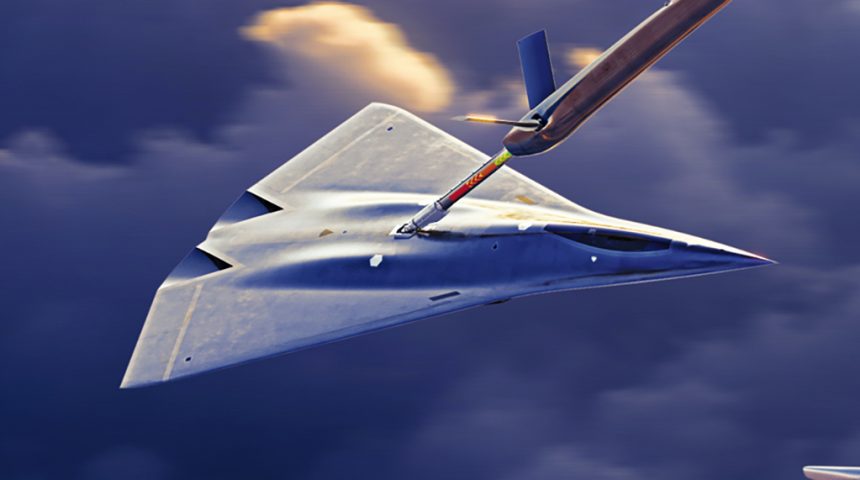The Air Force will select its Next Generation Air Dominance (NGAD) fighter in 2024.
In a news release published on May 18, 2023, the Secretary of the Air Force Public Affairs has announced the Department of the Air Force has begun to solicit proposals for the 6th generation NGAD fighter that will replace the F-22 with the intent to award a contract in 2024.
“The NGAD Platform is a vital element of the Air Dominance family of systems which represents a generational leap in technology over the F-22, which it will replace,” said Secretary of the Air Force Frank Kendall in the release. “NGAD will include attributes such as enhanced lethality and the ability to survive, persist, interoperate, and adapt in the air domain, all within highly contested operational environments. No one does this better than the U.S. Air Force, but we will lose that edge if we don’t move forward now.”
The release goes on by saying: “This solicitation release formally begins the source selection process providing industry with the requirements the DAF expects for NGAD, as the future replacement of the F-22 Raptor. The NGAD acquisition strategy will invigorate and broaden the industrial base to deliver rapid and innovative warfighting capabilities. The strategy incorporates lessons learned from recent Air Force acquisition programs and will leverage open architecture standards. This approach will enable the government to maximize competition throughout the life cycle, provide a larger, more responsive industry base and drastically reduce maintenance and sustainment costs.”
The NGAD Platform is one of many critical combat capabilities that will enable counter-air missions with the ability to strike both airborne and ground-based threats to achieve air superiority and support the Joint Force, the news release says, highlighting also that the Collaborative Combat Aircraft (CCA) program is not part of this NGAD Platform source selection.
Interestingly, like all the most recent programs, NGAD will have to leverage “open architecture standards” that will allow the industry to implement new capabilities and sustain the fighter through all its lifecycle. While the list of vendors that will compete for the NGAD contract is unknown, it’s pretty certain that Lockheed Martin, Northrop Grumman and Boeing are among them. Another option that was mentioned in the past is that each company could be assigned specific components of a design that would later be integrated in a final “joint” design.
According to Secretary Kendall, the U.S. Air Force should procure 200 NGAD fighters along with 1,000 CCA, autonomous drones that will cooperate in the “loyal wingman” role with the sixth-generation combat aircraft within a “system of systems” that see the fighters cooperating and interconnected with other assets (including F-35s), satellites, a secure combat cloud network, air defense nodes and so on.
As most of our readers, at least one full scale NGAD demonstrator has been flying in secret at least since 2020. Then, more recently, The War Zone spotted another tailless, delta-wing aircraft in satellite imagery of Area 51 that may well be related to the NGAD program. Furthermore, we should not forget about the interesting sightings across the U.S. observed in 2014.
Yesterday we finally got a first look at the B-21 (https://t.co/GFqpXmaPcB) that will fly for the first time in 2023. What puzzles me is that we still don’t know which aircraft flew over Amarillo and Wichita in 2014. (Story here: https://t.co/25v5yhIsM8) pic.twitter.com/0lUQ9a2mDk
— David Cenciotti (@cencio4) December 3, 2022
Interestingly, the announcement comes few days after a Northrop Grumman clip teased the shape of their notional NGAD-like concept.
As a side note, let’s not forget there’s is no official or uniformly recognized definition of “6th generation combat aircraft”. In reality, it should be noted, that the generations classification (traditionally associated with fighters only) is probably only meaningful to aviation enthusiasts and large aerospace companies, which promote their projects on the market as part of marketing campaigns focused precisely on the concept of “new generation”.
But the categorization for generations has always been a matter of debate and still remains quite arbitrary. In 2009, when talks of a possible evolution path with respect to the fifth generation began with greater insistence, it was hypothesized that the future 6th generation aircraft would be “optionally manned”; equipped with extreme all-aspect LO (Low Observability); featuring morphing capabilities (i.e. they could change the external shape of the vehicle to adapt it to the flight regime or the mission) and could employ directed energy/laser armament.
Northrop Grumman has been the first to introduce its own aircraft as a sixth generation platform. They did so on December 2, 2022, revealing the new B-21 Raider to the world during a ceremony held at Air Force Plant 42 in Palmdale, California. The Raider is the first American strategic bomber developed in over 30 years and is an innovative platform in many respects; however, it is not clear whether and which of the characteristics hypothesized in the past for the 6th generation (some difficult to implement, others at least imaginative), have actually landed in the new stealth bomber. What is certain is that some of the features that characterize the Raider will constitute the distinctive elements of all new generation aircraft: digital design carried out using the agile development methodology; high networking capacity as well as the collection and dissemination of information; open architecture; advanced stealth technology; adaptive cycle engines.
That said, it should be emphasized that today we speak of 6th generation to talk about a wide range of current or future projects that will lead to the introduction into service of new combat aircraft (which at the initial design level, actually, look similar to one another) but which in fact do not “certify” the platform has a certain capability or performance standard, nor is it able to meet an actual operational requirement.









